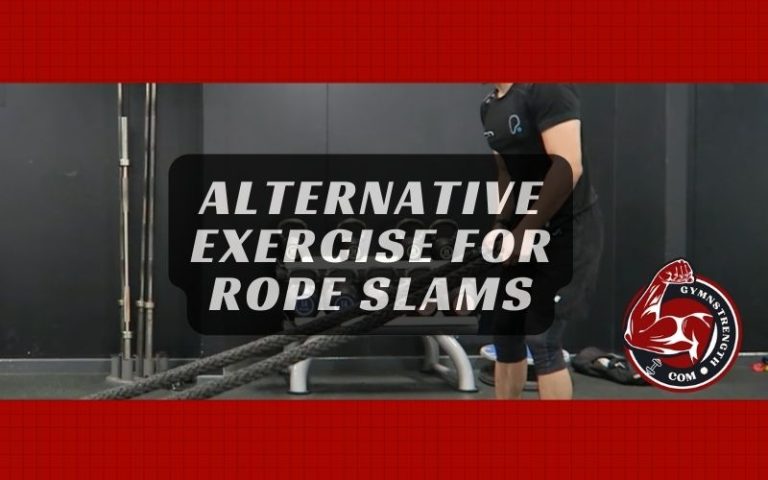The Importance of Core Strength in Weightlifting

Core strength is essential in weightlifting because it stabilizes your body during lifts and helps prevent injuries. It’s not just about having a six-pack; a strong core supports your entire body, improving your lifting technique and posture. Engaging your core creates intra-abdominal pressure, enhancing strength and safety while you lift. Neglecting core strength can lead to poor form and a higher risk of injury. There’s much more to discover about maximizing your weightlifting performance through core training.
Understanding Core Strength: What It Is and Why It Matters

Core strength is the foundation of effective weightlifting, as it stabilizes your body during lifts and helps prevent injuries. Understanding its importance is vital for your safety and performance. Core strength benefits include improved balance, better posture, and enhanced power transfer throughout your lifts. Many people think core strength only means having a six-pack; however, that’s a common misconception. In reality, core strength encompasses all the muscles in your abdomen, back, and pelvis, working together to support your movements.
The Role of Core Stability in Weightlifting
Core stability plays an essential role in your weightlifting success. It enhances your lifting technique, helping you maintain proper form while reducing the risk of injuries. Ultimately, a strong core can greatly improve your overall performance in the gym.
Enhances Lifting Technique
When you lift weights, having a stable core isn’t just beneficial; it’s crucial for peak performance. A strong core helps maintain proper body alignment throughout your lifts, allowing you to execute movements correctly and efficiently. This stability guarantees that your muscles work together harmoniously, reducing the risk of compensatory movements that could lead to strain or injury. Additionally, mastering effective breathing techniques can further enhance your lifting. By coordinating your breath with your movements, you create intra-abdominal pressure, which supports your spine and maintains that essential core stability. Remember, focusing on your core not only improves your technique but also boosts your overall strength, making every lift safer and more effective. Prioritize your core for better lifting outcomes!
Prevents Injuries
A strong core not only enhances your lifting technique but also plays an essential role in preventing injuries. When you engage your core effectively, it stabilizes your spine and pelvis, reducing the risk of strains and sprains during heavy lifts. This stability allows you to maintain proper form, which is vital for injury prevention. Without core engagement, you’re more likely to compromise your posture, increasing the likelihood of injuries to your back and joints. By prioritizing core strength in your training, you create a solid foundation that supports your entire body. Remember, a well-conditioned core is key to keeping you safe while pushing your limits in weightlifting. Stay focused on your core, and you’ll enjoy safer and more efficient workouts.
Improves Overall Performance
Strengthening your core greatly improves your overall performance in weightlifting, as it provides the stability needed for effective and powerful lifts. When you focus on core engagement, you’ll notice significant stability improvement, allowing you to lift heavier weights safely. Here’s how a strong core enhances your performance:
- Better balance during lifts
- Enhanced power transfer from the lower to upper body
- Reduced risk of injury by stabilizing the spine
- Improved posture, leading to ideal lifting form
- Greater endurance, allowing for longer training sessions
Benefits of a Strong Core for Weightlifters
Having a strong core is essential for weightlifters, as it not only enhances overall stability but also improves performance in the gym. With effective core muscle engagement, you’ll find that your lifts become more controlled and powerful. This stability allows you to maintain proper form, reducing the risk of injury during heavy lifts. Implementing stability training techniques, like planks or stability ball exercises, can further strengthen your core, providing a solid foundation for all your movements.
A robust core contributes to better balance, making it easier to stabilize yourself under heavy loads. It also aids in transferring power from your lower body to the weights, increasing your efficiency. Ultimately, prioritizing core strength means you’re not just lifting more safely, but also maximizing your strength potential. Embrace core workouts in your routine, and you’ll notice significant improvements in your weightlifting performance while keeping safety at the forefront.
Common Weightlifting Exercises That Engage the Core

Many weightlifting exercises naturally engage the core, making them effective for building strength and stability. Incorporating these exercises into your routine not only enhances your lifting potential but also promotes safety by improving your balance and posture.
Here are some common weightlifting exercises that engage the core:
- Deadlifts: They require core stability to maintain proper form.
- Squats: Your core helps support your spine during the movement.
- Overhead Press: This exercise challenges your core to stabilize as you lift.
- Medicine Ball Slams: They engage the core dynamically, offering both strength and cardio benefits.
- Plank Variations: Incorporating side planks or plank holds can enhance your overall core strength. Additionally, exercises like planks are effective for core stabilization as they help maintain a straight body line while engaging multiple muscle groups.
Tips for Building Core Strength Effectively
To build core strength effectively, you’ll want to focus on key exercises that target your abdominal and back muscles. It’s also essential to maintain proper form to prevent injuries and maximize your gains. Incorporating progressive overload strategies will help you continually challenge your core and track your progress.
Key Core Exercises
Core strength is the foundation of effective weightlifting, and incorporating key exercises into your routine can make all the difference. Here are some essential core exercises to enhance your strength safely:
- Plank variations: Start with basic planks and progress to side planks or plank jacks.
- Medicine ball twists: Sit on the floor, lean back slightly, and rotate the ball side-to-side.
- Dead bugs: Lie on your back, raise your arms and legs, then lower opposite limbs while keeping your core engaged.
- Bicycle crunches: Lie on your back and alternate bringing your elbow to the opposite knee in a cycling motion.
- Russian twists: Sit with your knees bent, lean back, and twist your torso while holding a medicine ball.
Incorporating these exercises can help build a strong, stable core for lifting.
Proper Form Techniques
Building a strong core isn’t just about doing exercises; it’s about using proper form to maximize effectiveness and prevent injury. Focus on maintaining core stability during every lift. Engage your core before starting any movement, ensuring your spine stays neutral and your pelvis is aligned. Pay attention to your lifting mechanics; improper technique can lead to unnecessary strain. When performing exercises, guide your movements slowly and deliberately, allowing your core to support your back and prevent excessive twisting. Use visual cues or mirrors to check your form, ensuring that your shoulders are back and your hips are steady. Remember, prioritizing safety through proper form will not only enhance your core strength but also improve your overall weightlifting performance.
Progressive Overload Strategies
While many lifters focus on increasing weights for major lifts, applying progressive overload to your core training is equally essential for developing strength effectively. To safely enhance your core strength, consider these progressive overload techniques with incremental load adjustments:
- Increase reps: Gradually add more repetitions to your core exercises.
- Add resistance: Use weights or resistance bands to challenge your muscles.
- Vary tempo: Slow down your movements to increase tension on your core.
- Change angles: Adjust the angle of your exercises to target different muscle fibers.
- Shorten rest periods: Reduce the time between sets to boost endurance and strength.
Core Training Mistakes to Avoid
Even the most dedicated weightlifters can fall into common traps when it comes to core training. One major mistake is neglecting proper form during core exercises. You might think that as long as you’re working hard, you’re doing it right, but poor technique can lead to injury. Another common misconception is that crunches are the only way to strengthen your core. In reality, a strong core involves stability and strength across various muscle groups, so diversify your exercises. Additionally, avoid overtraining; your core needs time to recover just like any other muscle. Many lifters also ignore their breathing, which is essential for maintaining core stability. Finally, don’t skip core training altogether, thinking it’s secondary. A strong core supports your lifts and enhances performance. By steering clear of these pitfalls, you’ll build a safer, stronger core that benefits your weightlifting journey. Furthermore, incorporating exercises like skipping rope can effectively engage your core while providing an excellent cardiovascular workout.
Incorporating Core Work Into Your Weightlifting Routine

Incorporating core work into your weightlifting routine can markedly enhance your overall performance and stability. Prioritizing core engagement not only supports your lifts but also reduces the risk of injury. Here are some effective ways to integrate core exercises into your regimen:
- Planks: Hold for 30 seconds to build endurance.
- Russian Twists: Use a medicine ball to improve rotational strength.
- Dead Bugs: Focus on maintaining control while alternating limbs.
- Hanging Leg Raises: Strengthen your lower abs and hip flexors.
- Core Stability Ball Exercises: Enhance balance and coordination.
Aim for a consistent workout frequency, dedicating a couple of days each week to core strengthening. Remember to prioritize proper form and technique to guarantee safety while performing these exercises. By committing to core work, you’ll see improvements in your lifting capacity and overall athletic performance.
Frequently Asked Questions
How Does Core Strength Affect Overall Athletic Performance?
Did you know that athletes with strong core stability can improve their performance by up to 30%? When you focus on core strength, you enhance your athletic performance by providing better balance, coordination, and power transfer. A solid core helps protect you from injuries, allowing you to train safely and effectively. So, if you want to elevate your game, prioritizing core stability is essential for reaching your full athletic potential.
Can Core Exercises Help Prevent Injuries in Other Sports?
Yes, core exercises can definitely help prevent injuries in other sports. By improving your core stability, you create a solid foundation for all movements, reducing the risk of strains and sprains. A strong core supports your body during various activities, enhancing balance and coordination. When your core is engaged, it stabilizes your spine and pelvis, allowing for better control and efficiency, which ultimately leads to greater safety while participating in your favorite sports.
Is It Possible to Overtrain the Core Muscles?
Imagine your core muscles like a tightly wound spring. If you keep twisting and stretching it without a break, it’ll lose its bounce. You can definitely overtrain your core, leading to core fatigue. It’s essential to listen to your body and incorporate recovery strategies, like rest days and gentle stretching. Ignoring these signs can not only hinder progress but also increase the risk of injuries, so prioritize safety in your training routine.
What Role Does Nutrition Play in Core Strength Development?
Nutrition plays a vital role in developing core strength. You need adequate protein intake to help repair and build muscle after workouts, ensuring your core gets stronger over time. Don’t forget about hydration levels, too; staying well-hydrated supports muscle function and recovery. By focusing on balanced nutrition, you’re not just fueling your body but also creating an ideal environment for your core muscles to thrive and perform safely during your training sessions.
How Does Age Impact Core Strength and Stability?
Just like fine wine that tends to age, your body experiences an age-related decline in core strength and stability. As you grow older, maintaining core stability becomes vital to prevent injuries and enhance balance. Incorporating core stability training into your routine can help combat these changes, ensuring you stay safe while moving. It’s essential to adapt your workouts to match your age, allowing you to cultivate strength while safeguarding your body.





